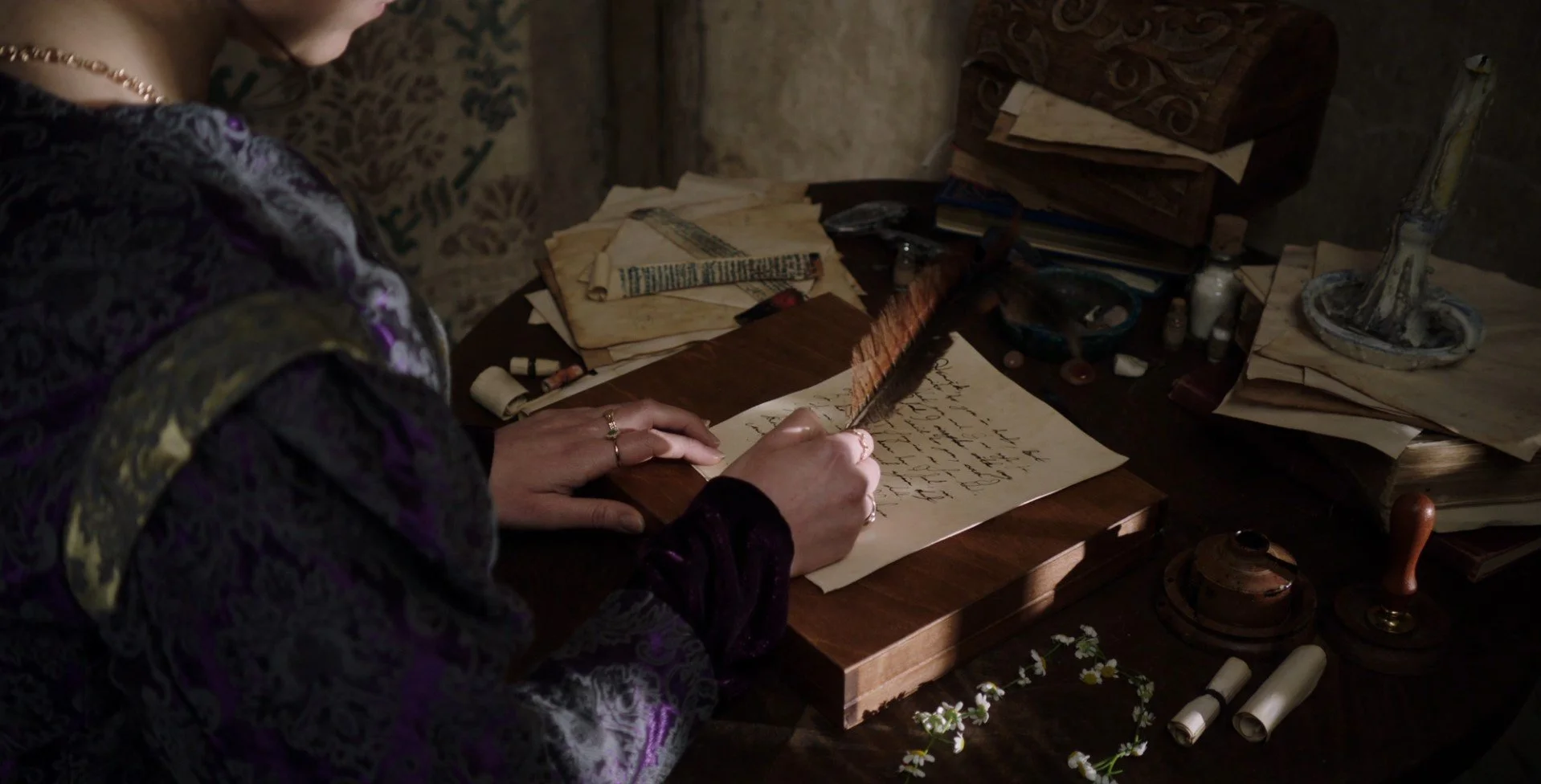
Inspiration
How a fictional murder story, a shared encounter with Batman, and a huge stroke of luck lead to the creation of a fairytale short film…
It was a drizzly Sunday afternoon when Jonathan pitched Herries an idea: a short film adaptation of Another Castle which Herries had written for his website about a year earlier.
Another Castle flash fiction by Herries Anderton
The short story, which can be read in less than three minutes, could be described as a gothic fairytale with a brutal final twist. It lent itself perfectly to a visually evocative, easy-to-grasp idea that would perfectly translate to the medium of film. Or so they thought...
After several weeks trying to crack the story, Jonathan and Herries realised the budget they would need to realise their Bloodborne meets The VVitch adaptation was far greater than the resources that they had available and that the film needed a stronger central relationship.
They spent the Christmas period mulling over other possibilities until they finally landed on a new idea: a princess locked in a tower, only instead of a saviour coming to her rescue she has nobody except her servant; and rather than being a wide-eyed Disney princess she’d be older, more mature yet less socially adept.
The Lady of Shallot and other fairy tales were key inspirations for The Daisy Crown
What would happen to her? How would she feel? The knight always rescues the princess. What if they didn’t? Who would she turn to?
Jonathan and Herries were production assistants working on Matt Reeves’ The Batman when they met back in 2021. Both of them were excited to be crewing on a feature that they were highly anticipating and found common ground in their love of genre films.
At the time, Jonathan was in pre-production on The Last Mechanic - a science fiction comedy short about a disgruntled mechanic in 2051 who talks us through the events of the past thirty years - and Herries was beginning to write his own fairytale novel, which combines 1200 folktales into one meta-narrative, which he has since completed.
They both agreed that they wanted to craft a more grounded version of a classic fairytale that focused on the intensity of unspoken feelings whilst asking questions about institutions and our roles within them. Giving the project limited characters and one location made the project finally viable to film.
Pooling together their industry contacts, they banded together an initial crew and started casting. It was a chemistry-dependent coupling that needed to feel authentic. The princess had to be older, the servant had to be younger, and the Lord Steward had to be sinister without being cartoonish.
Afterwards they secured a location, and by their reckoning, it was the only location in the UK that not only matched their brief (a medieval-looking room that could pass for the inside of a tower) but that was also furnished enough that they didn’t need additional days for dressing and striking.
The Weald and Downland location before and after set dressing
The shoot itself, which began almost a year exactly after they had first agreed to work together, involved the talents of 20 crew and 3 cast members at the Weald and Downland Living Museum in Chichester. Everything was planned carefully because truly a minute could not be wasted on set.
The department heads, who faced their own unique challenges, all rose to the occasion. The director of photography, Kit Mackenzie, created subtle changes in the lighting so that each scene felt like a different day whilst maintaining a naturalistic palette.
Camera plans for The Daisy Crown by Kit Mackenzie
Similarly, costume designer, Jenny Anderton, highlighted the passage of time with distinctive regal outfits that were both period-accurate and entirely handmade, and hair and make-up artist, Leanne Reid, applied progressively unrestrained hairstyles to reflect the internal growth of the princess’s character. These are but a few instances of the many personal touches the crew brought to the finished film.
Costume designs for The Lord Steward, Henrik and Elysia by Jenny Anderton
Costume designs for Princess Elysia by Jenny Anderton
Over one especially frosty weekend, the team were able to shoot 35 slates and 66 takes, set dress and strike the location, have six costume changes for their lead character, one night scene, two exterior scenes, a special effects rig, and even managed to squeeze in a debrief after the first shoot day, over a pint of course.
Which leads them here… Having just finished the post-production with only a handful of highly talented people, The Daisy Crown is now ready to begin its festival run. What started as a very insular project between two strangers evolved not only into a friendship but also a finished film that they are about to showcase.
As for Herries and Jonathan, who are already planning their next project together, they find themselves asking, “But how expensive would a horde of zombie extras really be?”









